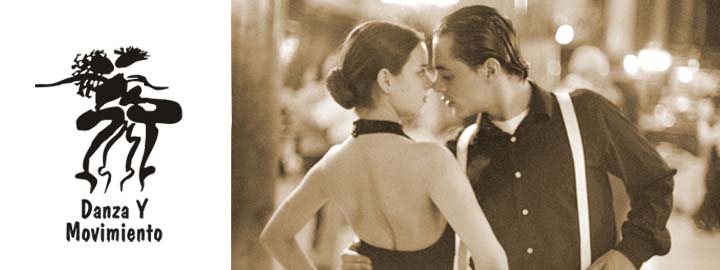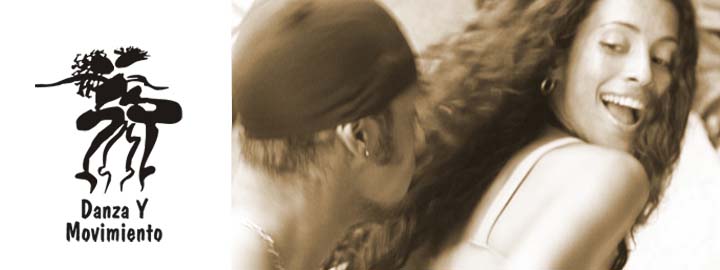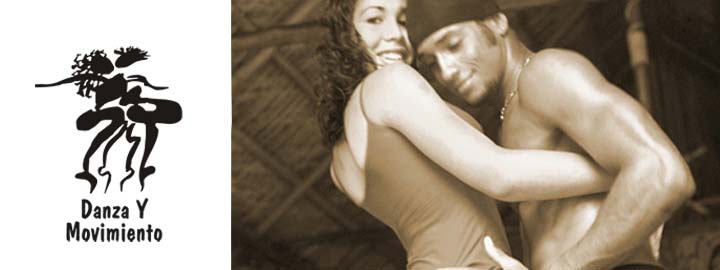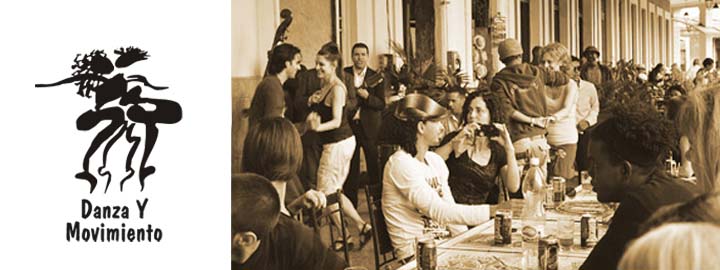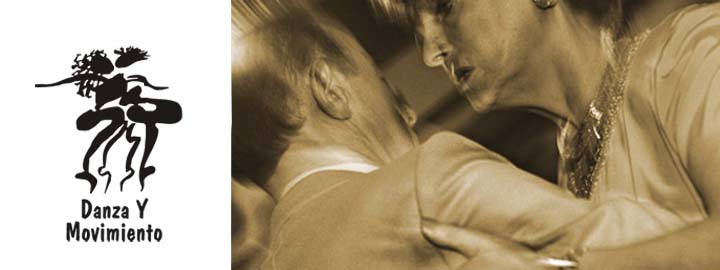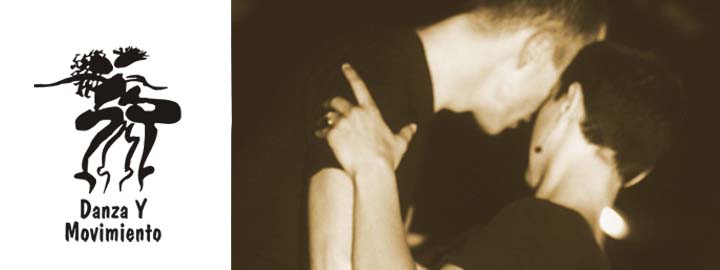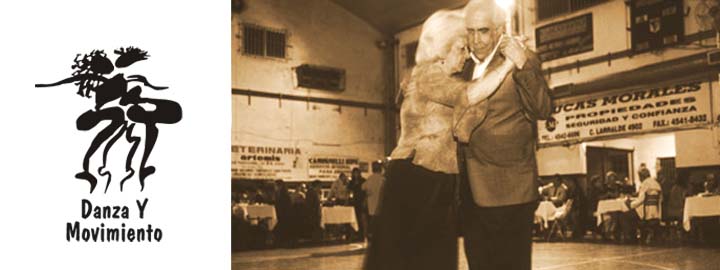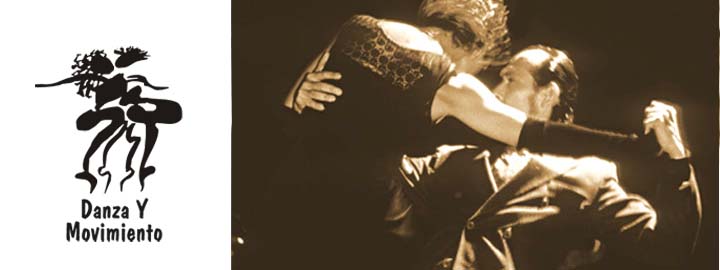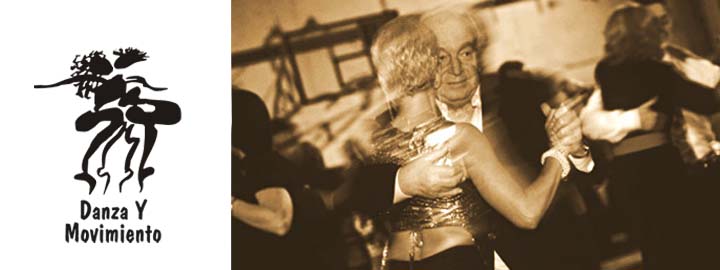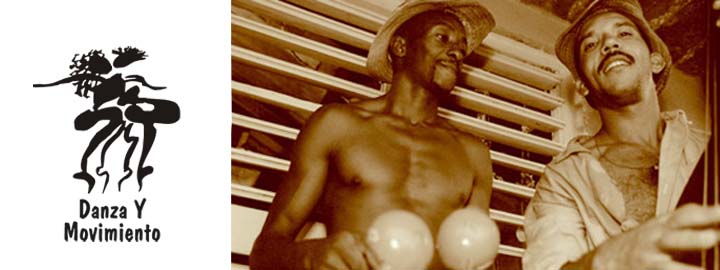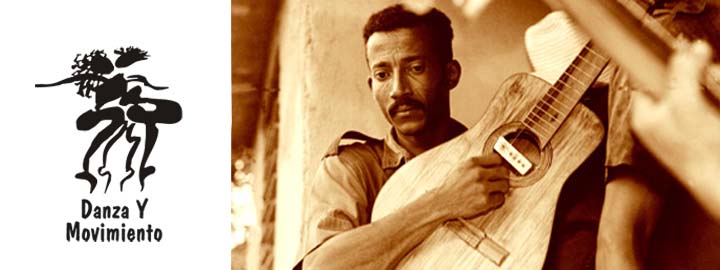Varios
Que Bonboncito - Tangos Instrum.
Genre: Tango: TangoLabel: DYM Laufzeit: 54 min.
Code: dz003008
EAN: 718750143822
Ausführliche Trackinfos und Kommentare unten
Dieses Album kann auf Anfrage im WAV-Audioformat geliefert werden

Die vorliegende CD stellt drei Orchester vor, die zur Zeit der Goldenen Ära des Tango Argentino in Buenos Aires sehr beliebt waren, später allerdings fast vollkommen in Vergessenheit gerieten. Julio de Caro war gemeinsam mit dem Bandoneonisten Pedro Maffia der erste ...







Detailinfos zu den Titeln
1 - El pilleteSexteto Julio De Caro
Duration: 02:55
Genre: Tango
Instrumental:
Composer: Graciano De Leone
Author:
Publisher: n/a
Record year: 20020901
Country: DE
ISRC: DEN720200384
2 - Batida nocturnaSexteto Julio De Caro
Duration: 02:37
Genre: Tango
Instrumental:
Composer: Julio De Caro
Author:
Publisher: n/a
Record year: 20020901
Country: DE
ISRC: DEN720200385
3 - ArreandoOrquesta Pedro Maffia
Duration: 02:51
Genre: Tango
Instrumental:
Composer: Manuel Colominas
Author:
Publisher: n/a
Record year: 20020901
Country: DE
ISRC: DEN720200386
4 - PeleleOrquesta Pedro Maffia
Duration: 03:11
Genre: Tango
Instrumental:
Composer: Pedro Maffia
Author:
Publisher: n/a
Record year: 20020901
Country: DE
ISRC: DEN720200387
5 - Muchachito lindoOrquesta Pedro Maffia
Duration: 03:12
Genre: Tango
Instrumental:
Composer: Alberto Cima
Author:
Publisher: n/a
Record year: 20020901
Country: DE
ISRC: DEN720200388
6 - Tiempo pasadoOrquesta tipica Brunswick
Duration: 03:06
Genre: Tango
Instrumental:
Composer: F. Romeo,
Author: A. Cazes
Publisher: n/a
Record year: 20020901
Country: DE
ISRC: DEN720200389
7 - Fruta prohibidaOrquesta tipica Brunswick
Duration: 02:50
Genre: Tango
Instrumental:
Composer: B.Nortoni
Author:
Publisher: n/a
Record year: 20020901
Country: DE
ISRC: DEN720200390
8 - Se finiOrquesta tipica Brunswick
Duration: 03:02
Genre: Tango
Instrumental:
Composer: Eugenio Nobile
Author:
Publisher: n/a
Record year: 20020901
Country: DE
ISRC: DEN720200391
9 - JuevesSexteto Julio De Caro
Duration: 03:07
Genre: Tango
Instrumental:
Composer: Udelino Toranzo, Rafael Rossi
Author:
Publisher: n/a
Record year: 20020901
Country: DE
ISRC: DEN720200393
10 - El buey soloSexteto Julio De Caro
Duration: 03:28
Genre: Tango
Instrumental:
Composer: Agustin Bardi
Author:
Publisher: n/a
Record year: 20020901
Country: DE
ISRC: DEN720200394
11 - De rompe y rajaSexteto Julio De Caro
Duration: 02:33
Genre: Tango
Instrumental:
Composer: Julio De Caro
Author:
Publisher: n/a
Record year: 20020901
Country: DE
ISRC: DEN720200395
12 - LargaloOrquesta Pedro Maffia
Duration: 03:17
Genre: Tango
Instrumental:
Composer: Julio Cesar Sanders
Author: Julio Cesar Sanders
Publisher: n/a
Record year: 20020901
Country: DE
ISRC: DEN720200396
13 - Anoche en el clubOrquesta Pedro Maffia
Duration: 02:45
Genre: Tango
Instrumental:
Composer: Alejandro Schujer
Author:
Publisher: n/a
Record year: 20020901
Country: DE
ISRC: DEN720200397
14 - Chique!Orquesta Pedro Maffia
Duration: 03:37
Genre: Tango
Instrumental:
Composer: Ricardo Brignolo
Author:
Publisher: n/a
Record year: 20020901
Country: DE
ISRC: DEN720200398
15 - AngustiaOrquesta Pedro Maffia
Duration: 03:16
Genre: Tango
Instrumental:
Composer: Americo L.Bonnami, Horacio Pettorosi
Author:
Publisher: n/a
Record year: 20020901
Country: DE
ISRC: DEN720200399
16 - Mi penaOrquesta tipica Brunswick
Duration: 02:51
Genre: Tango
Instrumental:
Composer: Edgardo Donato
Author:
Publisher: n/a
Record year: 20020901
Country: DE
ISRC: DEN720200400
17 - Que bonboncitoOrquesta tipica Brunswick
Duration: 02:47
Genre: Tango
Instrumental:
Composer: J.N.Brignolo
Author:
Publisher: n/a
Record year: 20020901
Country: DE
ISRC: DEN720200401
18 - La cancion del pirataOrquesta tipica Brunswick
Duration: 02:48
Genre: Tango
Instrumental:
Composer: Roque Emilio Pietrafesa
Author:
Publisher: n/a
Record year: 20020901
Country: DE
ISRC: DEN720200402
Reviews
Review : F. Koeppel / The Comercial Appeal
Danza y Movimiento, a recording company in Hamburg, Germany,
offers an astonishing 800 albums devoted to the tango. One could safely
say to tangoistas everywhere that if Danza y Movimiento doesn?t have it,
they don't need it.
The album in question is Que Bonboncito, Tangos Instrumentales, Vol.
2, a compilation of 18 tangos recorded in Buenos Aires between 1929
and 1932. In the album notes, Klaus Johns tells us briefly about the
history of the tango in that era and about the groups presented here:
Sexteto Julio De Caro, Orquesta Pedro Maffia and Orquesta Tipica
Brunswick, the last so named
because it served as the tango band for the Brunswick record label.
We'll leave it to aficionados to elucidate the subtleties among these
groups and their approaches to the tango. Suffice to say that one does not
have to be fleet of feet and soulful of glance to be swept away by these
tunes and arrangements. The sound is a little tinny but gracefully so, the
syncopated rhythm peculiar to the tango is infectious, and the energy is
irresistible.
These are not the smoky, passionate, death-in-desire latter-day tangos of
Astor Piazzolla; the mood here is more clubby, more formally organized
and upbeat, but tremendous fun. I don't know that I would listen to 799
other tango albums immediately, but I'm glad I heard this one.? (Fredric Koeppel aus Memphis / Tenesee, ?The Comercial Appeal?)
F. Koeppel / The Comercial Appeal, 20030604
Review : Raffi Meneshian / GLOBAL RHYTHM
This is a charming set of historical Argentinean tango recordings from 1929 - 1932. As with an historical recording, the sound is faded and a bit harsh. However, fear not - this collection has been digitally remastered, giving it a nice boost. Much like the recordings from Trditional Crossroads, Danza y Movimiento has moticulously researched and presented us with an important sound document.
The recordings features two main personalities: Pedro Maffia and his backup ensemble, Orquesta Tipica Brunswick. According to published accounts, Pedro Maffia ushered in a new sound for tango recordings by being more expressive and loose with his bandoneon playing. Indeed Maffia was an innovator and these recordings are considered by many to be the turning point in tango. Like other bandoneon innovators such as Astor Piazzolla and Dino Saluzzi, the exitement and innovation that Maffia creates on this collection is infectious. The Toranzo and Rossi composed piece, "Jueves", is a standout. Sonic quality aside, Tangos Instrumentales Vol. 2 is a welcome addition to the library of significant recordings remastered and reissued on CD.
Raffi Meneshian in GLOBAL RHYTHM
Raffi Meneshian / GLOBAL RHYTHM, 20030815
Review : Hans Peter Salzer
Was soll ich über diese CD bloß schreiben, und vor allem: wie?³, so
eröffnet Stimme A einen fiktiven Dialog im Geiste des Rezensenten, worauf
Stimme B antwortet: ?Na, ist doch ganz einfach: Schreib wie sie ist!³
A: ?Das ist es ja eben ... so einfach ist das nämlich nicht.³
B: ?Wie? Du kannst nicht sagen, ob die CD gut oder schlecht ist?³
A: ?Doch, doch ... sie ist gut.³
B: ?Ahhh ... gut ... und weiter?³
A: ?Wen interessiert das schon?³
B: ?Was?³
A: ?Zum Beispiel, dass es sich um Aufnahmen aus gerade mal vier Jahren
handelt, die von 1929 bis 1932 eingespielt wurden ganz am Anfang der
Mikrophontechnik.³
B: ?Also eher schlecht?³
A: ?Im Gegenteil: die 18 Stücke sind technisch sehr sorgfältig restauriert
worden bis auf eine Ausnahme: »De rompe y raja«, da schepperts schon bei
Zimmerlautstärke so richtig.³
B: ?Und die anderen Stücke?³
A: ?Mindestens 13 haben alles was man zum Tanzen braucht: klaren Rhythmus und teilweise schöne Melodien.³
B: ? ... kann man also auch bei einem Tanzabend auflegen?³
A: ?Im Prinzip ja. Ist aber eine Frage des Geschmaks. Denn einerseits
handelt es sich um Interpreten, die auf den Pisten weniger zu hören sind ...³
B: ?Zwischenfrage: welche?³
A: ?Das Sexteto Julio de Caro, das Orquesta Pedro Maffia und das Orquesta
Tipica Brunswick ...³
B: ?Wie bitte: Tipica Brunswick?³
A: ?Ja, Brunswick war eine Plattenfirma mit einem eigenen Orchester, wie
beispielsweise auch die Firma RCA-Victor.³
B: ?Okay. Und andererseits?³
A: ?Andererseits kommen die Aufnahmen aus einer Zeit, da der Tango noch
nicht Tempo und Drive der späteren Jahre hatte. Viele Stücke kommen recht gemütlich und vergleichsweise lieblich daher und das muss einem liegen.³
B: ?Also eine Zusammenstellung für Liebhaber und Sammler?³
A: ?Ganz bestimmt, aber nicht nur. Spannend ist beispielsweise, dass De Caro und Maffia in dieser Zeit einen eigenen Stil entwickelten, den Tango
entscheidend beeinflussten. Man vergleiche nur Maffias »Chiqué!« (1930) mit der Jahrzehnte später eingespielten Version von Pugliese bei Maffia ist
vieles schon mit drin gewesen.³
B: ?Andere Empfehlungen zum Reinhören?³
A: ?Das markante »La canción del pirata«, »Pelele«, »Jueves« und das schöne »Fruta prohibida«, bei dem gar eine singende Säge mitspielt.³
B: ?Fazit?³
A: ?Etwas langsamere Tangos aus frühen Aufnamen, gut tanzbar und gut restauriert.³
Hans Peter Salzer, Tango-Jay, www.argentango.de/dj
erschienen in Tangodanza 1-2004, Zeitschrift für Tango argentino
Hans Peter Salzer, 20031212
Review : A. Romero
Que Bonboncito is a recording of beautifully- restored tracks from 1929 to 1932. The album, released by Germany's Danza y Movimento label, is a valuable asset to those who love the tango.
By the mid-1920s Buenos Aires was divided into two camps concerning the tango - traditionalists and the evolutionists. Julio De Caro and Pedro Maffia defined the evolutionary style. In fact, the great classical composer Manual de Falla wrote at the time, "From what I have heard in Argentina, De Caro's music is the most precious and points the way ahead."
These men enriched the tango, as it then existed, with exaggerated melodic phrasing, romantic treatment of the violins and the orchestrally-arranged individual parts. De Caro's group was formed in 1924 and lasting, through personnel changes, all the way up to 1952. Pedro Maffia was the bandoneon player in De Caro's group until 1927 then founded his own orchestra around 1929. Today, the Orquesta Tipica Brunswick is relatively unknown. Like many other labels (RCA Victor, for example) Brunswick employed an in-house tango band. But Brunswick was done by 1932, so these recordings are rare indeed.
(found on www.worldmusiccentral.org)
A. Romero, 20040503
Review : Evolution Music
Per quanto riguarda il tango Buenos Aires intorno al 1925 era divisa in due blocchi contrapposti: i tradizionalisti e gli evoluzionisti. Francisco Canaro e Roberto Firpo difendevano la tradizione e non riuscivano a capire, o forse si rifiutavano di comprendere, lo stile rivoluzionario di Julio de Caro e Pedro Maffia. Prima del 1930 le orchestre suonavano in modo più o meno simile senza alcuno stile personale: Julio de Caro insieme al fratello Francisco de Caro ed al bandoneonista Pedro Maffia è stato il primo ad arricchire il tango con estetismi rivoluzionari per quei tempi: frasi quasi esageratamente melodiche, violini romantici e il contrasto tra l'arrangiamento delle diverse parti musicali divennero la caratteristica del nuovo tango. Questa nuova mentalità si rivela nello stesso periodo anche nel caso di Carlos Gardel che aveva già composto 700 canzoni nel 1930 ma che compose le sue hits solo dopo quell'anno, nel corso dei suoi ultimi 5 anni di vita. La gran parte delle formazioni degli anni '20 suonava principalmente nei cinema come orchestra d'accompagnamento ai film muti; ciascuna orchestra aveva il 'suo' cinema e frequentemente la gente andava allo spettacolo più per ascoltare la musica che per vedere il film. L'introduzione del sonoro mise fine a questa situazione e diede impulso ai musicisti di trovare nuovi orientamenti musicali. Infine l'introduzione del microfono elettrico intorno al 1926 migliorò sensibilmente la qualità delle registrazioni, tanto che ancora oggi possiamo godere delle preziose incisioni di quel periodo ricco di idee ed innovazioni: "Que Bonboncito", follow-up del best seller "Tangos Instrumentales para Bailar", ci rapisce con le imperdibili registrazioni originali - adeguatamente remasterizzate - del Sexteto De Caro, dell'Orquesta Pedro Maffia e dell'Orquesta Tipica Brunswick. Best seller.
Evolution Music, 20060215
Review : Musicwords
Een meer dan voortreffelijke collectie instrumentale tango's uit de periode 1929-1932. Namen als Orquesta Tipica Brunswick, Sexteto Julio De Caro en Orquesta Pedro Maffia zullen de tangoliefhebber genoeg zeggen. De geluidskwaliteit is opmerkelijk goed en de informatie is meer dan voldoende.
Musicwords, 20060301
DyM Blog
-
Die frühen Jahre des Osvaldo Fresedo
In diesen Tagen erscheinen neun Alben, die sich exklusiv mit den frühen Aufnahmen
... -
Gut Tango tanzen mit urheberrechtsfreier Musik
Wer in Veranstaltungen und/oder Kursen Musik spielt, die frei von Urheberrechten ist, braucht dafür nichts zu zahlen. Danza y Movimiento verfügt über ein Paket von
... -
Noten für Tango und andere Rhythmen
Endlich gibt es bei „Danza y Movimiento“ Notenausgaben für Tango, Jazz, Bolero, Bossa und moderne Klassik. Die Werke wurden teilweise für Soloinstrumente (Piano,
...
